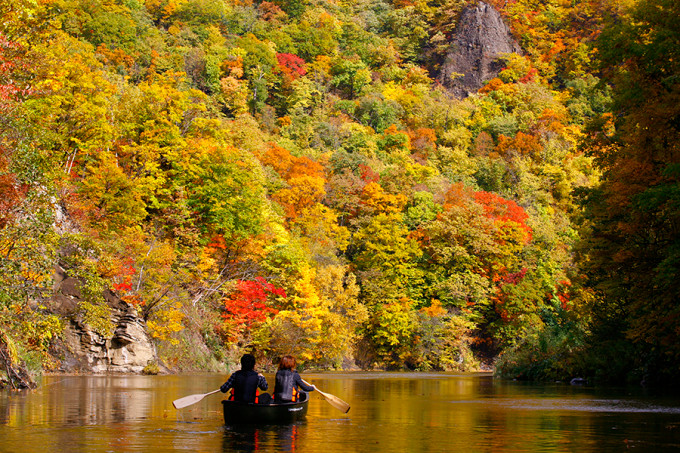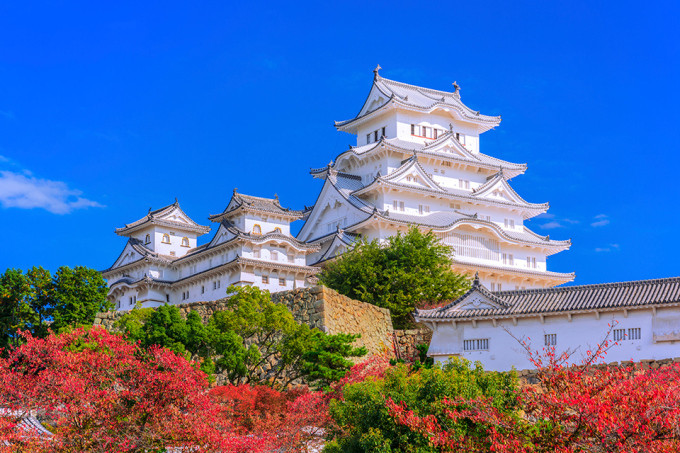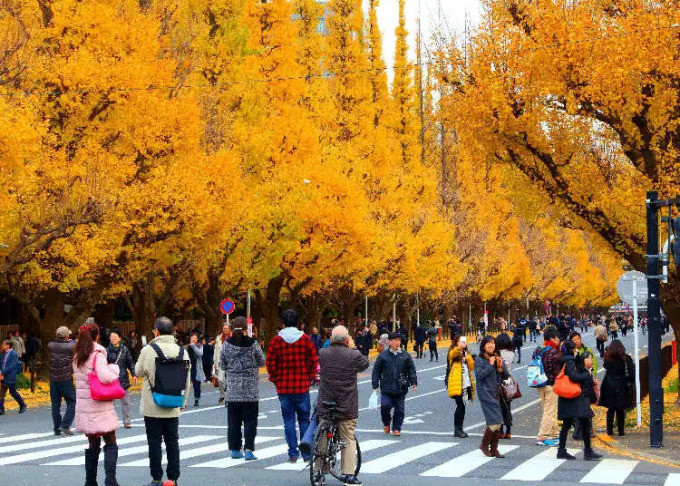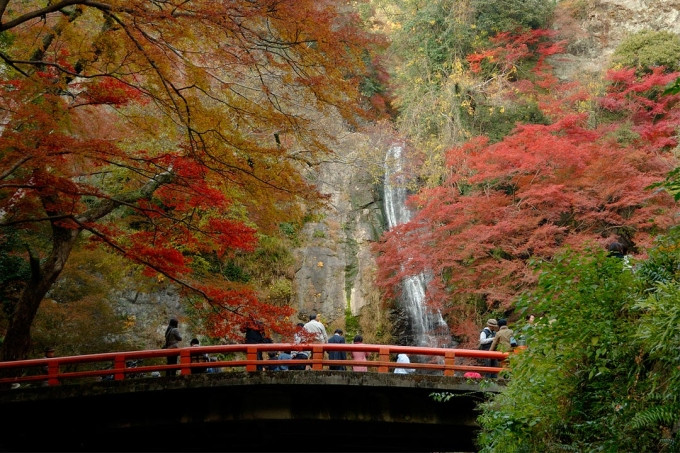This year, visitors can enjoy Japan's autumn, admiring the yellow and red leaves from mid-October to mid-December.
According to the Japan National Tourism Organization in Vietnam (JNTO), autumn is the best time to travel to Japan because the weather is "neither too hot nor too cold", convenient for all tourism activities. JNTO suggests the time when leaves change color in 4 Japanese cities, tourists can refer to for their upcoming trip.
Sapporo
Time of leaf change: October 28
Sapporo is located in Hokkaido, Japan. This is one of two cities with the earliest yellow and red leaves this fall. The time for leaves to change color in this area is also longer than in other provinces and cities in Japan. Visitors here can enjoy the autumn atmosphere by hiking, camping or sightseeing in national parks, mountain slopes, and hot springs.

Take a boat ride to see the natural scenery in Sapporo
When coming to Sapporo in the fall, in addition to admiring the changing colors of nature, visitors can participate in the Sapporo Autumn Festival. This is the biggest annual festival of the year in Hokkaido. The festival takes place for 3 weeks at Odori Park with many booths and fun activities. This year, the festival takes place from September 8 to 30.
Sapporo is one of the three cities with the best ramen in Hokkaido. The noodles here have a moderate chewiness, the vegetables are stir-fried with garlic and lard to create a unique aroma, and the beef broth is sweet.
Hiroshima
Time of leaf change: November 22
Visitors can see yellow and red leaves in Hiroshima from late November to early December.

The scenery of changing leaves at Hiroshima Castle
Hiroshima Peace Memorial Park, Hiroshima Castle, and Momijidani Park are some of the city’s most popular spots for viewing the changing leaves. What these places have in common is that they are surrounded by trees, so when the leaves change color, the scenery is filled with yellow and red.
When visiting Hiroshima in the fall, don’t forget to try momiji manju, a maple leaf-shaped red bean paste cake. This cake has been around since 1907 and has gradually become a specialty every fall. Today, momiji manju has many versions, different in both shape and ingredients.
Tokyo
Time of leaf change: November 28
In Tokyo, the leaves start changing color from late November. Coming to the Japanese capital at this time, visitors can admire the "golden roads" in many public places. One of the most notable is the Meiji Jingu Gaien area with 150 ginkgo trees planted along a road of more than 300 meters. The fallen leaves create a natural golden carpet, attracting visitors to visit and take photos.

People and tourists take pictures with the "golden road"
If visitors come to Tokyo outside of the fall foliage season, they can consider visiting nearby mountains such as Mitake and Takao, where the leaves change color earlier.
Osaka
Time of leaf change: 1/12
Osaka starts to have red leaves from early December. The temperature in this area in the last months of the year fluctuates between 8-12 degrees Celsius, visitors should choose appropriate clothes. Visitors can enjoy the autumn scenery and take photos at some prominent locations such as Minoo Park, Hoshida Park, Osaka Castle or Midosuji Ginkgo trees.

Maple leaves turn red at Minoo Park
In addition to enjoying the autumn atmosphere, when coming to Osaka, visitors should not forget to enjoy local dishes because this city is known as the "culinary capital" of Japan. Typical dishes are grilled saury, grilled sweet potatoes, maple leaves and sesame seeds.
According to VnExpress